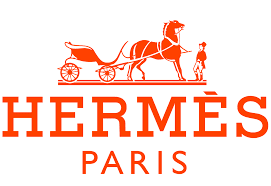Lacoste (French pronunciation: ) is a French clothing company founded in 1933 that sells high-end clothing, footwear, perfume, leather goods, watches, eyewear, and most famously polo shirts. In recent years, Lacoste has introduced a home line of sheeting and towels. The company can be recognized by its green crocodile logo. René Lacoste, the company's founder, was nicknamed "the Crocodile" by fans because of his tenacity on the tennis court. In November 2012 Lacoste was bought by Swiss family-held group Maus Frères.
HISTORY
Lacoste founded La Chemise Lacoste in 1933 with André Gillier, the owner and president of the largest French knitwear manufacturing firm at the time. They began to produce the revolutionary tennis shirt Lacoste had designed and worn on the tennis courts with the crocodile logo embroidered on the chest. Although the company claims this as the first example of a brand name appearing on the outside of an article of clothing, the "Jantzen girl" logo appeared on the outside of Jantzen Knitting Mills' swimsuits as early as 1921. In addition to tennis shirts, Lacoste produced shirts for golf and sailing. In 1951, the company began to expand as it branched from "tennis white" and introduced color shirts. In 1952, the shirts were exported to the United States and advertised as "the status symbol of the competent sportsman," influencing the clothing choices of the upper-class. Lacoste was sold at Brooks Brothers until the late 1960s. It is still one of the most popular brands in the United States, sporting the "preppy wardrobe". In 1963, Bernard Lacoste took over the management of the company from his father René. Significant company growth was seen under Bernard's management. When he became president, around 300,000 Lacoste products were sold annually. The Lacoste brand reached its height of popularity in the US during the late 1970s and became the signature 1980s "preppy" wardrobe item, even getting mentioned in Lisa Birnbach's Official Preppy Handbook of 1980. The company also began to introduce other products into their line including shorts, perfume, optical and sunglasses, tennis shoes, deck shoes, walking shoes, watches, and various leather goods.
In the United States in the 1970s and 1980s, Izod and Lacoste were often used interchangeably because starting in the 1950s; Izod produced clothing known as Izod Lacoste under license for sale in the U.S. This partnership ended in 1993 when Lacoste regained exclusive U.S. rights to distribute shirts under its own brand. In 1977, Le Tigre Clothing was founded in an attempt to directly compete with Lacoste in the US market, selling a similar array of clothing, but featuring a tiger in place of the signature Lacoste crocodile.
More recently, Lacoste's popularity has surged due to French designer Christophe Lemaire’s work to create a more modern, upscale look. In 2005, almost 50 million Lacoste products sold in over 110 countries. Its visibility has increased due to the contracts between Lacoste and several young tennis players, including American tennis stars Andy Roddick and John Inner, French veteran Richard Gasquet, and Swiss Olympic gold medalist Stanislas Wawrinka. Lacoste has also begun to increase its presence in the golf world, where noted two time Masters Tournament champion José María Olazábal and Scottish golfer Colin Montgomerie have been seen sporting Lacoste shirts in tournaments.
Bernard Lacoste became seriously ill in early 2005, which led him to transfer the presidency of Lacoste to his younger brother and closest collaborator for many years, Michel Lacoste. Bernard died in Paris on March 21, 2006.
Lacoste licenses its trademark to various companies. Until recently, Devanlay owned the exclusive worldwide clothing license, though today Lacoste Polo Shirts are also manufactured under licence in Thailand by ICC and also in China. Pentland Group has the exclusive worldwide license to produce Lacoste footwear, Procter & Gamble owns the exclusive worldwide license to produce fragrance, and CEMALAC holds the license to produce Lacoste bags and small leather goods.
BRIEF DESCRIPTION
In the early '50s, Bernard Lacoste teamed up with David Crystal, who at the time owned Izod, to produce Izod Lacoste clothing. In the 1970s and 1980s, it was extremely popular with teenagers who called the shirts simply Izod. While the union was both profitable and popular, Izod Lacoste's parent company (Crystal Brands, Inc.) was saddled with debt from other business ventures. When attempts to separate Izod and Lacoste to create revenue did not alleviate the debt, Crystal sold his half of Lacoste back to the French and Izod was sold to Van Heusen
















